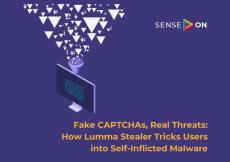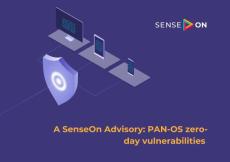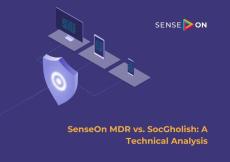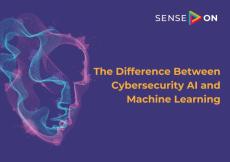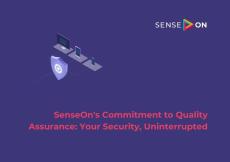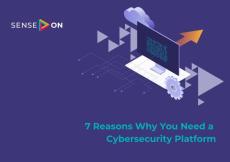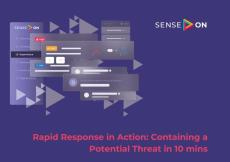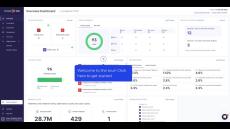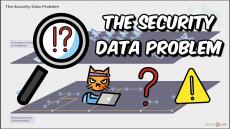|
By Sam Stoneley
SenseOn has detected a large increase in the Lumma Stealer malware targeting customers over the past few months. Unlike traditional malware strains, Lumma Stealer has been leveraging a unique, and increasingly effective, access vector of fake CAPTCHA verification prompts. These deceptive prompts trick users into running malicious commands on their device eventually injecting malicious processes into legitimate programs. This attack vector is expected to become even more prevalent throughout 2025.
|
By Daniela Lopez
On the 18th of November 2024, Palo Alto published advisories disclosing two vulnerabilities affecting the Web Management Interface in PAN-OS. The most critical of these vulnerabilities is CVE-2024-0012 with a severity rating of 9.3. Exploitation of this vulnerability allows a remote, unauthenticated attacker with network access to the management web interface to gain PAN-OS administrator privileges.
|
By Laura Martisiute
DORA’s public consultation period is over. If your organisation deals with the finances of people or other entities based in the EU or provides services to a firm that does, you will want to know how its rule set has changed. We’ve read through the Digital Operational Resilience Act (DORA) documentation and kept up to speed with the latest EU FSI regulation memos. The bottom line is that DORA remains a very demanding regulation with a huge scope.
|
By Laura Martisiute
Based on our reading, the Digital Operational Resilience Act (DORA), is at a fundamental level, a transformative ICT challenge. DORA makes the speed and accuracy of security threat detection and response a board-level concern. Fail to stop, classify and report on cyber incidents accurately and, from 2025 onwards, your organisation could face a fine of 1% of global turnover.
|
By Laura Martisiute
In what feels like 10 minutes, cybersecurity AI and machine learning (ML) have gone from a concept pioneered by a handful of companies, including SenseOn, to a technology that is seemingly everywhere. In a recent SenseOn survey, over 80% of IT teams told us they think that tools that use AI would be the most impactful investment their security operations centre (SOC) could make.
|
By Laura Martisiute
Thanks to ChatGPT, you’ve probably heard a lot about generative AI technology over the last few years. Generative AI is artificial intelligence technology that works by taking input data like a request, processing it through different algorithms, and producing an output based on learned patterns. ChatGPT is a generative AI chatbot. 91% of security teams use generative AI, but 65% don’t fully understand the implications.
|
By Matthew O'Neil
In February of 2024, SenseOn was contacted to assist with investigating suspicious activity on a customer’s estate. SenseOn analysts quickly identified a malware infection and identified the variant as SocGholish. This blog will showcase SenseOn’s detection and response capabilities against the malware and a breakdown of SocGholish’s techniques and that of the threat actor observed.
|
By Laura Martisiute
At a high level, security leaders need tools that: a) Efficiently detect and respond to threats. b) Can be managed sustainably. c) Deploy quickly and scale with their organisation. d) Are cost-effective. Large SOCs in a handful of enterprises could do this by deploying point solutions and hiring experts to manage them. For everyone else, is there a more efficient way to deliver on these capabilities than a consolidated cybersecurity platform? If you’ve found one, stop reading now.
|
By Guest User
In the high-stakes world of cybersecurity, where threats evolve hourly and every endpoint is a potential vulnerability, rapid response can make or break an organisation's defences. A recent customer case study showcases how our Quick Actions feature is enhancing the way organisations handle cybersecurity incidents.
|
By Laura Martisiute
Is there one cybersecurity tool to rule them all? For most companies, the answer is probably yes. A cybersecurity platform combines multiple security capabilities — endpoint security, threat response, event logging, and more—into a single system. There are Swiss Army knife cybersecurity platforms that perform a range of tasks, like extended detection and response (XDR), and platforms with more niche functions.
|
By SenseOn
Get strategic guidance to understand and evaluate XDR for your organization. Read our Market Guide for Extended Detection and Response today to learn about the evolution of XDR tools, XDR's capabilities and benefits and limitations.
|
By SenseOn
In this guide, learn all about how you can do more for less. Made specifically for IT professionals, this guide walks through best practices to get the most out of your security team.
|
By SenseOn
In this guide, learn all about the business impacts of ransomware, and how to create a cybersecurity strategy to prevent this.
- January 2025 (1)
- December 2024 (1)
- November 2024 (4)
- October 2024 (1)
- August 2024 (4)
- July 2024 (5)
- June 2024 (3)
- May 2024 (4)
- April 2024 (5)
- March 2024 (2)
- January 2024 (1)
- December 2023 (2)
- November 2023 (3)
- October 2023 (3)
- September 2023 (4)
- August 2023 (3)
- July 2023 (4)
- June 2023 (4)
- May 2023 (4)
- April 2023 (2)
- March 2023 (3)
- February 2023 (11)
- December 2022 (1)
Make complex security toolstacks a thing of the past and gain efficiency with SenseOn, a consolidated cyber defence system.
SenseOn's cybersecurity platform provides detailed visibility into traditional blind spots, enabling organisations to identify and address vulnerabilities effectively.
- Protect: Complete end-to-end visibility
- Detect: Over 600 advanced analytics
- Respond: Automated response and remediation
Simplify your Security Operations & Reduce Risk.


